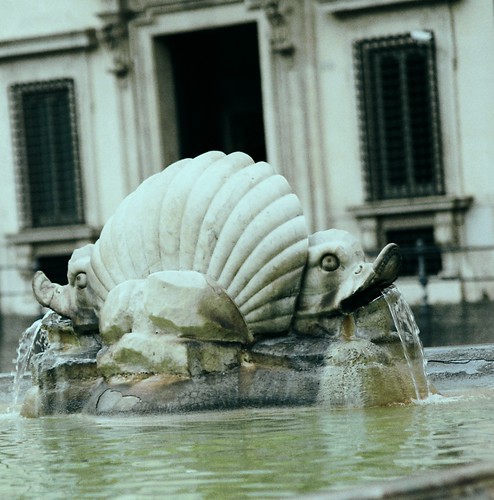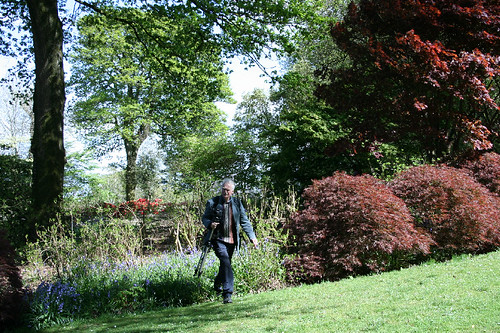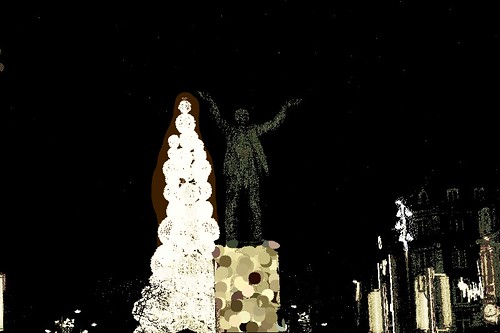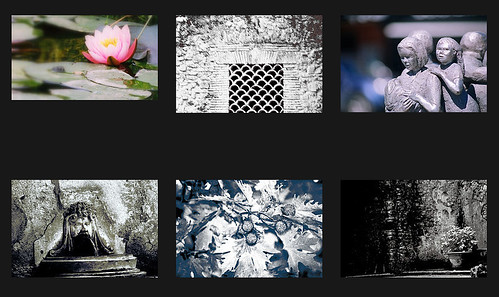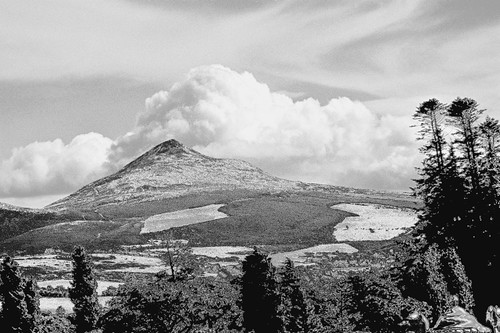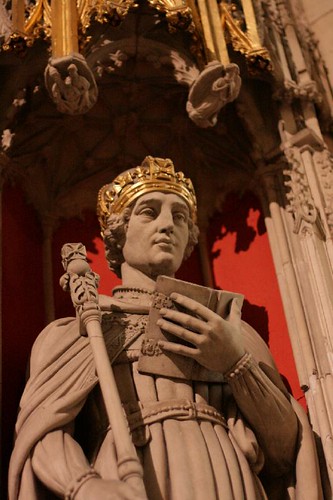
Tuesday, December 28, 2010
Friday, December 17, 2010
Viewers and Album Generators
From time to time I use Porta Album Generator to make collections of photos for friends. The "Lightbox" feature is useful, as all the photos can be viewed, in thumbnails, on one page.
It might be worth bringing all my Italian photos together in one spot in this format.
In the meantime, here's a memory of a lazy moment spent on a balcony in the mild November air outside Rome...
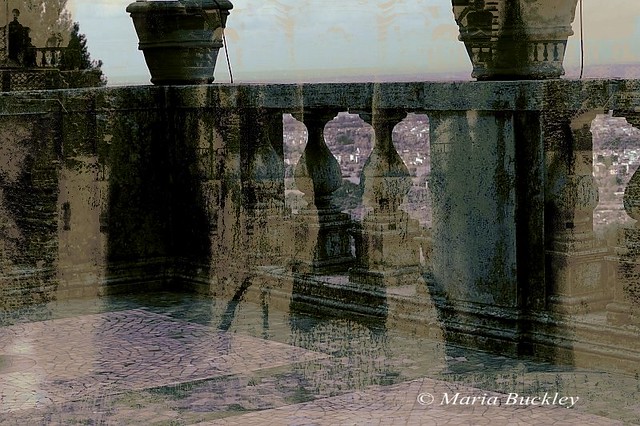
It might be worth bringing all my Italian photos together in one spot in this format.
In the meantime, here's a memory of a lazy moment spent on a balcony in the mild November air outside Rome...

Tuesday, December 14, 2010
A Stressed Effect
A lot of adept photographers use textures and layers to add depth to their work.
I found that, with gentle tweaking, Harry's Filters in Irfanview offer a quick and effective way to darken, burn, tweak and generally add a stressed, antique effect to the most ordinary photos.
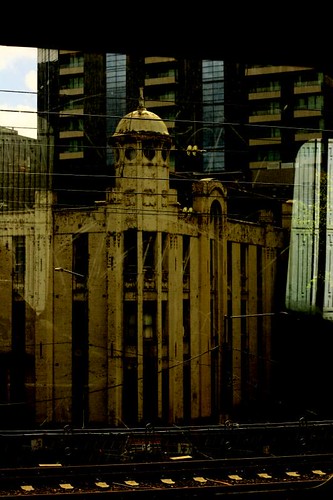
I found that, with gentle tweaking, Harry's Filters in Irfanview offer a quick and effective way to darken, burn, tweak and generally add a stressed, antique effect to the most ordinary photos.

Labels:
Faux Vintage,
Irfanview,
Stressed Effect
Saturday, December 11, 2010
Primes
I became so attached to the Canon 50mm f1.4 prime lens that it is rarely removed from my Digital Rebel. Some disucussion about adding a new lens to my arsenal has taken place, given that Christmas gifts are in order.
However, I have held back.
There is little point in buying new equipment without careful consideration about what sort of shots I wish to take. The sharpness that prime lenses offer has made me veer away from zooms from the time being. I wonder if an 80 mm prime, which will grow to the equivalent of 105mm or 110 mm due to crop factor, might be the best choice.
This may be just the lens for neat architectural shots of bridges and buildings while wandering round town.
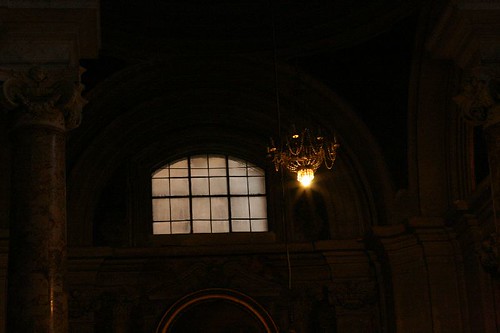
However, I have held back.
There is little point in buying new equipment without careful consideration about what sort of shots I wish to take. The sharpness that prime lenses offer has made me veer away from zooms from the time being. I wonder if an 80 mm prime, which will grow to the equivalent of 105mm or 110 mm due to crop factor, might be the best choice.
This may be just the lens for neat architectural shots of bridges and buildings while wandering round town.

Thursday, December 9, 2010
Custom White Balance
Sometimes everyday colours can be a bit bland.
I often use custom white balance setting in my Digital Rebel to create vivid in-camera effects. The tip is to choose a photo already on the card that is relatively lacking in detail but that imparts a hue to the new photos. Experimentation is essential, as I have not worked out a system that can predict what colour tones are the final result.
It's noteworthy that taking a shot of the black plastic in a car and using that dull photo can increase the richness of reds. A scientist would be able to explain why this is so.
It adds to the excitement, particularly on a dull, overcast day.
I often use custom white balance setting in my Digital Rebel to create vivid in-camera effects. The tip is to choose a photo already on the card that is relatively lacking in detail but that imparts a hue to the new photos. Experimentation is essential, as I have not worked out a system that can predict what colour tones are the final result.
It's noteworthy that taking a shot of the black plastic in a car and using that dull photo can increase the richness of reds. A scientist would be able to explain why this is so.
It adds to the excitement, particularly on a dull, overcast day.
Labels:
color,
colour,
Custom White Balance
Tuesday, November 30, 2010
My Trusty Pentax
I should try harder with film. I still have no idea how to process even the most basic BW film, but have decided to learn. It's too time consuming to keep bringing a single BW reel to a shop, wait a week, pay quite a bit and then take another public transport ride before I can see the fruits of my labour.
This photo was taken in Rome.
It's a wonderful city for street shots. There was a gathering of people watching a woman rush from a building to a large car and the photojournalists were out in force. I still do not know what it was all about, but I like this candid shot of a photographer who, having completed a good job of work, was totally aware of my trusty Pentax waving in his direction.
We're all in the same boat...

This photo was taken in Rome.
It's a wonderful city for street shots. There was a gathering of people watching a woman rush from a building to a large car and the photojournalists were out in force. I still do not know what it was all about, but I like this candid shot of a photographer who, having completed a good job of work, was totally aware of my trusty Pentax waving in his direction.
We're all in the same boat...

Friday, November 12, 2010
Colour and RGB
Professionals know to look for websafe colours when they are making a site. I tend to continue, haphazard, to job along happily without worrying about how a fine blue may show up as lurid purple elsewhere.
Merttol have some good tips on the subject.
I probably should calibrate my monitor... but that, unfortunately, would just be more work...
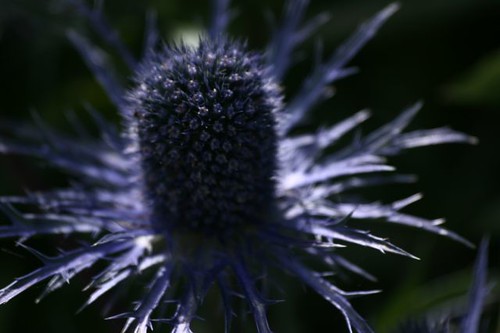
Merttol have some good tips on the subject.
I probably should calibrate my monitor... but that, unfortunately, would just be more work...

Thursday, November 11, 2010
It's Obvious, Really
The grinding upward struggle to make work quicker, more efficient, finally stopped yesterday.
Just make screenshots.
I worked out that using the colour conversions feature in Irfanview repeatedly, following that by "auto adjust colours" led to some strange, if effective duotones.
However, when the final jpeg was saved, it was full of broken pixels and blotchy skies.
Just snap the chosen image with the Prt Sc button on the keyboard and paste into your favourite photo editor.
Obvious, really...
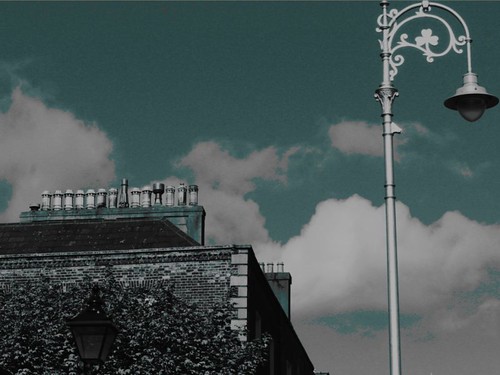
Just make screenshots.
I worked out that using the colour conversions feature in Irfanview repeatedly, following that by "auto adjust colours" led to some strange, if effective duotones.
However, when the final jpeg was saved, it was full of broken pixels and blotchy skies.
Just snap the chosen image with the Prt Sc button on the keyboard and paste into your favourite photo editor.
Obvious, really...

Wednesday, November 10, 2010
Monday, November 8, 2010
I Have Thought About How to Make Sharp Photos...
from a moving vehicle.
The main tip is to shoot in manual, setting the exposure to at least 1/350 seconds.
Any photo taken at less than f8 will be a bit soft, but can be sharpened, if needed.
Setting the ISO last, not first, ensures balanced exposure.
It may mean that the final photo may be a bit grainy, but that is better than a dizzy blur.
There is a useful explanation of the science involved on a site
"A Sibilant Intake of Breath".
It's called "Try f/8".
Oh... and I almost forgot... I always use a sturdy travel tripod to keep the camera steady.
The main tip is to shoot in manual, setting the exposure to at least 1/350 seconds.
Any photo taken at less than f8 will be a bit soft, but can be sharpened, if needed.
Setting the ISO last, not first, ensures balanced exposure.
It may mean that the final photo may be a bit grainy, but that is better than a dizzy blur.
There is a useful explanation of the science involved on a site
"A Sibilant Intake of Breath".
It's called "Try f/8".
Oh... and I almost forgot... I always use a sturdy travel tripod to keep the camera steady.
Wednesday, November 3, 2010
Monotone
Wednesday, October 27, 2010
Film
Wednesday, October 20, 2010
Monday, July 19, 2010
Remembering Italy
Memories of Italy in the soft November rain of 2009...
Gradually gathering photos together and presenting them
on Tumblr.
Many photographers and artists hang out there.
Worth a visit...
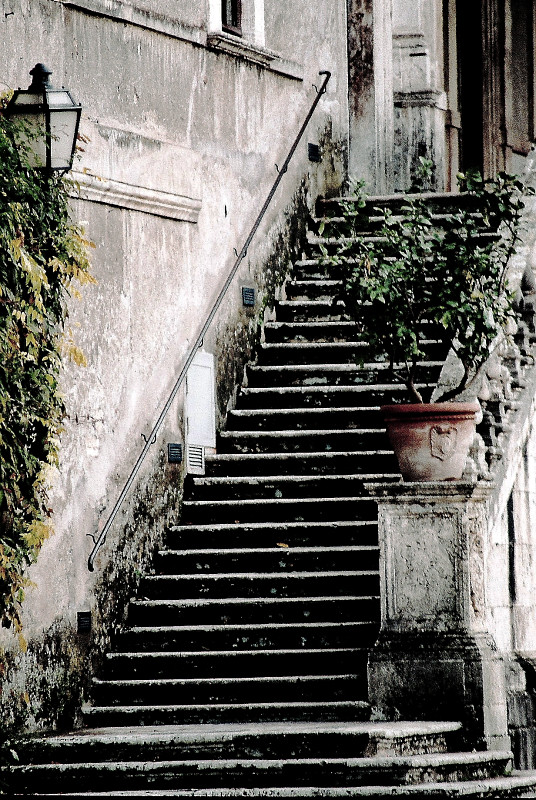
Gradually gathering photos together and presenting them
on Tumblr.
Many photographers and artists hang out there.
Worth a visit...

Labels:
Maria_Buckley,
photographedublin
Sunday, June 6, 2010
Street Portraits
I'm really proud of this photo.
The subject seemed so comfortable when the camera appeared and it enlivened a dull moment walking along a rainy street in Leeds.
It was my first visit to the city and there were many other new visitors about, commenting and trying to interpret what we saw. The street traders are very much in evidence and I missed a shot of a pleasant man selling the "Big Issue" purely because I was trying to manoeuvre the doors into the Victoria Arcade.
I expect that most of the traders are locals and there is a discussion about this in the Title Bar.
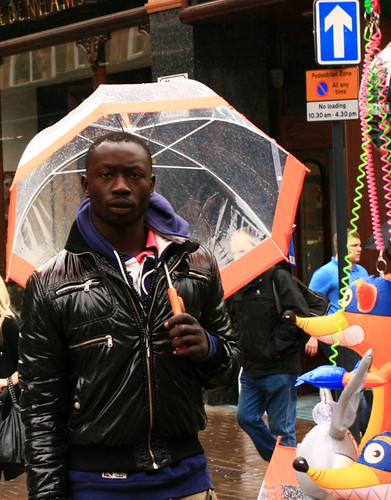
The subject seemed so comfortable when the camera appeared and it enlivened a dull moment walking along a rainy street in Leeds.
It was my first visit to the city and there were many other new visitors about, commenting and trying to interpret what we saw. The street traders are very much in evidence and I missed a shot of a pleasant man selling the "Big Issue" purely because I was trying to manoeuvre the doors into the Victoria Arcade.
I expect that most of the traders are locals and there is a discussion about this in the Title Bar.

Labels:
Anouilh,
Leeds,
photographedublin,
portraiture,
street photography
Monday, May 10, 2010
Friday, May 7, 2010
Painterly Photos
Saturday, May 1, 2010
Sympathic Images
Thanks to a contact with photographers who use narrative in curating their work, I have set out to make little stories with images gathered over time.
This does not come easily, as it calls for a thread that is visible, not just a mental construct imposed by the will.
The Fiveprime system is useful for placing work on a black background and making a screenshot that can be presented as a single image.
Having allowed Fiveprime access to one's Flickr account, just tag photos with a word that is particular to the theme chosen. Here, in order to bring six garden photos together, each was tagged with "analogue" and "moderntwist2".
The odd men out, the footballers, were not included in the final screenshot.

This does not come easily, as it calls for a thread that is visible, not just a mental construct imposed by the will.
The Fiveprime system is useful for placing work on a black background and making a screenshot that can be presented as a single image.
Having allowed Fiveprime access to one's Flickr account, just tag photos with a word that is particular to the theme chosen. Here, in order to bring six garden photos together, each was tagged with "analogue" and "moderntwist2".
The odd men out, the footballers, were not included in the final screenshot.

Monday, April 26, 2010
Aesthetics...
... or
"whatever you like yourself, Missus."
Objectivity shot out the window somewhere during my student years. I had been almost bound in a double Nelson of prescriptions in relation to the Arts in childhood, but with the halcyon days of the 'Sixties came aniline dyes, cheekiness and a delight in subjectivity. What is most heartening about my memories of those times is that the fine underpinning of centuries of design expertise had not been abandoned and people actually spent ages deciding on where exactly to make a hemline or how wide or narrow a belt should be in relation to the overall effect in a dress or suit. As a result, many photos from that time, especially street shots, are actually beautiful as they show a sense of proportion in the subjects captured.
Beauty may be in the eye of the beholder, but it can be useful to think about why some photos are better than others, or why there can be a consensus on such matters. There is almost a cult of ugliness in the visual arts at the moment (I found the 1970's quite painful to look at)... though many will rush to point out that it is my perception that an image or object is "ugly" is the cause of such a statement.
I don't know if the philosophers can help out here...
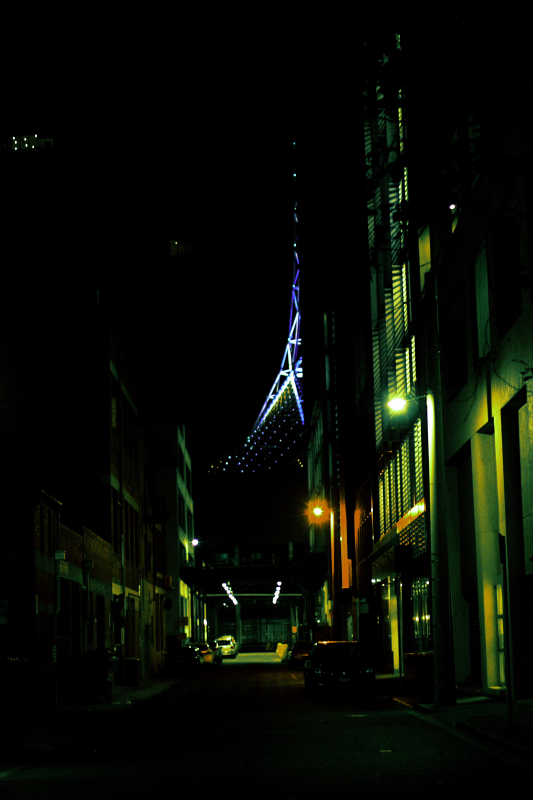
"whatever you like yourself, Missus."
Objectivity shot out the window somewhere during my student years. I had been almost bound in a double Nelson of prescriptions in relation to the Arts in childhood, but with the halcyon days of the 'Sixties came aniline dyes, cheekiness and a delight in subjectivity. What is most heartening about my memories of those times is that the fine underpinning of centuries of design expertise had not been abandoned and people actually spent ages deciding on where exactly to make a hemline or how wide or narrow a belt should be in relation to the overall effect in a dress or suit. As a result, many photos from that time, especially street shots, are actually beautiful as they show a sense of proportion in the subjects captured.
Beauty may be in the eye of the beholder, but it can be useful to think about why some photos are better than others, or why there can be a consensus on such matters. There is almost a cult of ugliness in the visual arts at the moment (I found the 1970's quite painful to look at)... though many will rush to point out that it is my perception that an image or object is "ugly" is the cause of such a statement.
I don't know if the philosophers can help out here...

Wednesday, April 21, 2010
Seo and Getting a Nice Template to Highlight Work...
I found liteflickr.com for the first time today.
A nifty way of viewing thumbnails of photos "On Black".
Using searches for various tags allows one to view photos with a similar subject.
Ideal!
A nifty way of viewing thumbnails of photos "On Black".
Using searches for various tags allows one to view photos with a similar subject.
Ideal!
Tuesday, April 20, 2010
As If We Didn't Have Enough to Worry Us...
I have reached crisis defecit.
"Is photography in crisis... threadbare...just plain done...???
I don't know... and, not to put a tooth in it, as elders in my childhood used intone,
I don't much care.
Here is a photo of a typical thatched cottage in Ireland... the sort of image that makes even hardened cynics think fondly of days of yore. It has been "enhanced" in a way that speaks to my unconscious, perhaps, or that is to the portion of my unconscious that is still there... it's hard to communicate with it, as it remains, happily, unconscious.
The only crisis I can think of at the moment would occur if there were no cottages left to photograph.
Really...

And here is a cottage that is not thatched, just for variety's sake.

"Is photography in crisis... threadbare...just plain done...???
I don't know... and, not to put a tooth in it, as elders in my childhood used intone,
I don't much care.
Here is a photo of a typical thatched cottage in Ireland... the sort of image that makes even hardened cynics think fondly of days of yore. It has been "enhanced" in a way that speaks to my unconscious, perhaps, or that is to the portion of my unconscious that is still there... it's hard to communicate with it, as it remains, happily, unconscious.
The only crisis I can think of at the moment would occur if there were no cottages left to photograph.
Really...

And here is a cottage that is not thatched, just for variety's sake.

Tuesday, April 6, 2010
Tuesday, March 23, 2010
Faux Lomo Effects
It's all in the colours, really.
I still remember how puzzled I was by polaroid effects when colour became possible for amateurs in the 1960's. There was a bleached, unreal tint to family shots and I was much pleased to discover slide film at the end of the decade.
This offers a nod to Faux Cross Processing, but is too sharp to take the viewer in,
I think.

I still remember how puzzled I was by polaroid effects when colour became possible for amateurs in the 1960's. There was a bleached, unreal tint to family shots and I was much pleased to discover slide film at the end of the decade.
This offers a nod to Faux Cross Processing, but is too sharp to take the viewer in,
I think.

Tuesday, March 2, 2010
Photographers and Moral Rights
There is an engraving by Gustave Doré which shows Don Quixote feverishly brandishing his sword at fantastical creatures swarming round his head. They have emerged from the book of fictional stories that he is reading and he is much exercised on the subject of defending the vulnerable from the over strong.
It is the closest image I can find that expresses the sheer weirdness of contemporary life in relation to Internet usage, particularly copyright and artists' rights.
Don Quichotte, c'est nous?
It is the closest image I can find that expresses the sheer weirdness of contemporary life in relation to Internet usage, particularly copyright and artists' rights.
Don Quichotte, c'est nous?
Tuesday, February 16, 2010
But Is It Art?
The discussion about Art and Photography has raged for far too long.
The uneasiness surrounding all art works which got fully into its stride in the 20th Century continues to puzzle and alarm.
A discussion on French radio in the early 1970's seemed to state the problem clearly enough
for my uncomplicated mind. There is a piece, consisting of an egg placed on a stool on display,
one of the contributors explained. It is presented as a work of art.
But if one were to be present at the moment when the person making this piece
placed the egg on the stool, would one call him (or her) an artist?
I cannot answer this question.
It makes me laugh, though nervously.
Emphasis on the consciousness of the artist is now old hat.
I used think that if the egg is placed in the allocated spot chosen by
the active agent, the artist, the ensemble is art.
Now I'm not at all sure.
Lurking, always, now is the question as to what unconscious impetus may be
at work when such a piece is created.
Grappling with unforgiving materials, as sculptors do,
always seems to be a more valid artistic activity,
but to think this is probably old fashioned.
I sound like Théophile Gautier, who saw that art must, to be true,
emerge from a struggle with the material world.
The art market has made terrifying demands on artistic merit,
purely by valuing some works at prices that are almost bizarrely
beyond reason. Gursky holds the record for the most expensive
photo ever sold, as the link in the title bar explains.
Whether or not I would be happy to part with millions for such an iconic artefact
raises so many questions about the art world and its inner workings that I feel,
quite understandably, giddy.
Photography, the democratic and mechanical capturing of images in light,exists somewhere in a realm
of disquiet. The macine captures the image, a split second activity that could be executed by remote control
and, nowadays, often is. The question of perception is what makes the photo live.
No machine exists that can interpret a photo truly. The communication between the work made by the
photographer and the viewer, a collusion of perception, is what makes the artwork.
The machine records, the artist arranges, the viewer perceives.
Probably enough for today.
(This, BTW, is not a work of art...
It is a piece of documentary, capturing what the rock face of The Grampians looks like during the day.
Here I am, happily, on much firmer ground...)
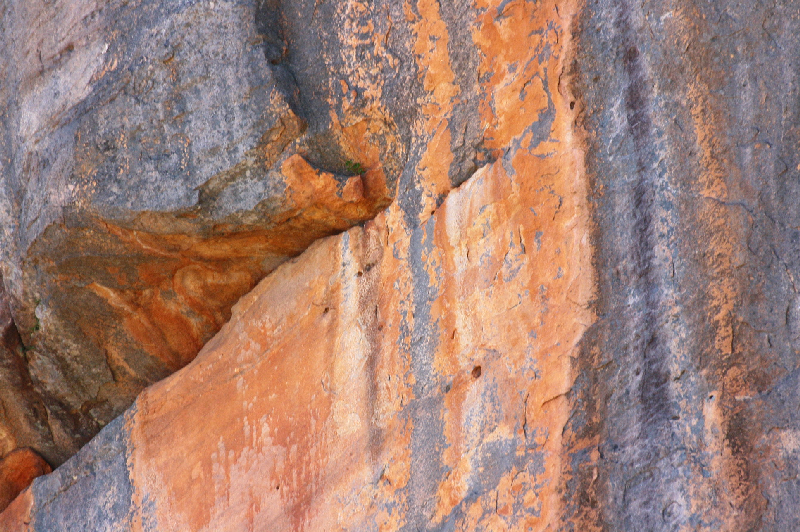
The uneasiness surrounding all art works which got fully into its stride in the 20th Century continues to puzzle and alarm.
A discussion on French radio in the early 1970's seemed to state the problem clearly enough
for my uncomplicated mind. There is a piece, consisting of an egg placed on a stool on display,
one of the contributors explained. It is presented as a work of art.
But if one were to be present at the moment when the person making this piece
placed the egg on the stool, would one call him (or her) an artist?
I cannot answer this question.
It makes me laugh, though nervously.
Emphasis on the consciousness of the artist is now old hat.
I used think that if the egg is placed in the allocated spot chosen by
the active agent, the artist, the ensemble is art.
Now I'm not at all sure.
Lurking, always, now is the question as to what unconscious impetus may be
at work when such a piece is created.
Grappling with unforgiving materials, as sculptors do,
always seems to be a more valid artistic activity,
but to think this is probably old fashioned.
I sound like Théophile Gautier, who saw that art must, to be true,
emerge from a struggle with the material world.
The art market has made terrifying demands on artistic merit,
purely by valuing some works at prices that are almost bizarrely
beyond reason. Gursky holds the record for the most expensive
photo ever sold, as the link in the title bar explains.
Whether or not I would be happy to part with millions for such an iconic artefact
raises so many questions about the art world and its inner workings that I feel,
quite understandably, giddy.
Photography, the democratic and mechanical capturing of images in light,exists somewhere in a realm
of disquiet. The macine captures the image, a split second activity that could be executed by remote control
and, nowadays, often is. The question of perception is what makes the photo live.
No machine exists that can interpret a photo truly. The communication between the work made by the
photographer and the viewer, a collusion of perception, is what makes the artwork.
The machine records, the artist arranges, the viewer perceives.
Probably enough for today.
(This, BTW, is not a work of art...
It is a piece of documentary, capturing what the rock face of The Grampians looks like during the day.
Here I am, happily, on much firmer ground...)

Monday, January 4, 2010
The Past
I have taken to thinking about how fashion directs even how we see the World...
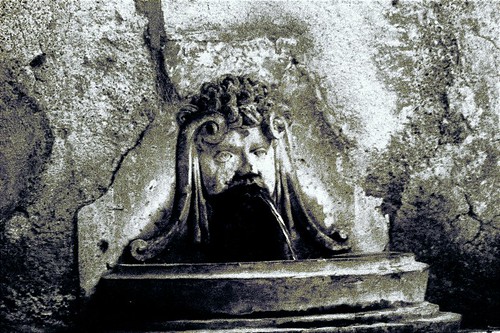
Regression in art was very fashionable in the 'Sixties.
Nowadays I think the technical advances in photography clamour for finely-honed, hdr images which seem perfect and of another world. They are often far removed from the visual vocabulary of everyday life and seem to take on a life of their own.
I avoid looking at the new screens that are taking over public spaces because they seem to lure the viewer in to the neglect of the "real" world around.
Photographers owe it to themselves to become as conscious as possible of what their images are saying to viewers, especially when they upload to the Internet.
Point and shoot photos are often treated as if they have no context or meaning, when, in fact, they are some of the most interesting work many photographers produce. Looking at these snaps and finding why they might have attracted the photographer is one way of communicating with another person in a non-verbal way.
Having spent time reading Barthes and finding more references to Proust and photography, it seems that photography has found its place as one of the main art forms of the 21st Century. Baudelaire was given to finding faults with such a new-fangled technology.
I expect if he were around today he would be amazed.
Why, for instance, has photography taken such a long time to become established as a valid art form?
Can anybody now become an artist thanks to photographic technology?
What draws many viewers to some photos when others get ignored?
What are the storage systems that will allow future generations to find the work we are doing now?

Regression in art was very fashionable in the 'Sixties.
Nowadays I think the technical advances in photography clamour for finely-honed, hdr images which seem perfect and of another world. They are often far removed from the visual vocabulary of everyday life and seem to take on a life of their own.
I avoid looking at the new screens that are taking over public spaces because they seem to lure the viewer in to the neglect of the "real" world around.
Photographers owe it to themselves to become as conscious as possible of what their images are saying to viewers, especially when they upload to the Internet.
Point and shoot photos are often treated as if they have no context or meaning, when, in fact, they are some of the most interesting work many photographers produce. Looking at these snaps and finding why they might have attracted the photographer is one way of communicating with another person in a non-verbal way.
Having spent time reading Barthes and finding more references to Proust and photography, it seems that photography has found its place as one of the main art forms of the 21st Century. Baudelaire was given to finding faults with such a new-fangled technology.
I expect if he were around today he would be amazed.
Why, for instance, has photography taken such a long time to become established as a valid art form?
Can anybody now become an artist thanks to photographic technology?
What draws many viewers to some photos when others get ignored?
What are the storage systems that will allow future generations to find the work we are doing now?
Subscribe to:
Posts (Atom)

